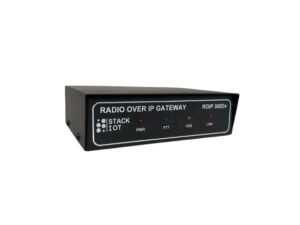Introduction
Fast and direct communication is essential to contemporary business operations – whether it is the logistics, retail store management, or field service department. Nonetheless, conventional communication networks such as radio networks, PBXs, or cell phone calling packages might be costly to operate and expand.
That is where Push-to-Talk (PTT) apps are involved. Through the currently deployed 4G/5G or WiFi networks, such apps will make smartphones and tablets instant communication devices – similar to walkie-talkies, but with the distance, potential, and cost-effectiveness of the internet.
What Are Push-to-Talk Apps?
PTT applications allow voice connectivity, with a single touch of a button, on WiFi or cellular networks. Users can press a button to be able to speak to people or groups in real time as opposed to dialing numbers or dedicated radio frequencies.
Key Features
- The communication is immediate; there is no delay in voice communication where there is no dialing or ringing.
- Group and private channels
- Cross-platform compatibility (Android, iOS, PC, and special purpose PTT devices).
- Location sharing and GPS tracking.
- Text, visual and video messaging.
- Dispatch and user management on clouds.
- PTT applications do not require costly radio equipment and enable teams to remain connected regardless of the location provided it has network access.
The Cost Issue in the Traditional Communication
Organizations that rely on voice communication voice-based business like logistics, construction, and hospitality tend to experience the following challenges:
- Radio equipment (repeaters, towers, licenses) is expensive.
- Short distance of analog radios.
- Expensive mobile to mobile phone communicational bills.
- Repair costs and license charges of personal networks.
- Takes a lengthy period to set up new users or locations.
All of these problems are solved using Push-to-Talk apps based on cloud and cellular technologies.
How Push-to-Talk Apps Reduce Communication Costs
- Radio Infrastructure not necessary.
The conventional radio systems need repeaters, base stations and licensing which are all expensive. The PTT apps operate on the existing 4G/5G and WiFi networks, which do not require any costs on infrastructure.
- Lower Device Costs
PTT can be used on smartphones, tablets or low-cost ruggedized PTT devices – not necessary to use proprietary radios and special equipment.
- Less Maintenance and License charges
PTT solutions powered by the cloud remove the costs of yearly license, frequency allocation and maintenance of equipment. The updates are automatic, which is achieved via the app.
- Free Range with No Extravagant Fees
In comparison to the traditional radios, PTT over Cellular is not restricted by any geographical boundaries. The teams located in other cities or even countries can talk without having to spend on long distance or roaming.
- Group Communication Effectiveness
Managers are able to talk to a whole group of people simultaneously instead of calling them individually and waste time and airtime.
- Lower Training Costs
PTT applications are easy to use and not complex and new employees can learn the app in a few hours, as well as saving on boarding costs.
Cost Comparison: Traditional Radio vs Push-to-Talk Apps
| Cost Factor | Traditional Radio System | Push-to-Talk Apps |
| Hardware | $1000–$2500 per radio | $0–$100 (use existing smartphones) |
| Infrastructure | Towers, repeaters, licensing | Uses existing 4G/5G/WiFi networks |
| Coverage Range | Limited to few km | Nationwide or global |
| Maintenance | Ongoing servicing costs | Cloud-managed, auto-updates |
| Scalability | Hardware-based | Add users instantly via app |
| Training Time | 1–2 weeks | 1–2 days |
| Monthly Communication Costs | High (carrier + licensing) | Significantly reduced (data-based) |
Average Cost Reduction:
Businesses adopting PTT apps report 30–60% savings in total communication expenses.
Real-World Impact
- Logistics & Transportation
Two-way radios were substituted by PTT apps based on a logistics company, which served drivers and dispatchers. The switch saved 45 percent of the cost of communications and made the delivery coordination better with the help of GPS-based tracking.
- Retail Chains
Retail managers made calls in PTT apps to communicate between the employees of the store and the regional supervisors without subscribing to multiple mobile voice plans – reduced monthly phone bills by half. - Construction Sites
Workers at construction companies carried out with rugged smartphones through PTT apps, which got rid of renting repeaters and allowed companies to save thousands of dollars every year in communication overhead.
Indirect Savings and Efficiency Gains
| Area | Description | Impact |
| Faster Coordination | Group PTT reduces call setup time | Saves 1–2 hours per team per day |
| Reduced Downtime | Cloud-managed system, fewer technical issues | Improves productivity |
| Enhanced Safety | GPS + emergency alert features | Prevents costly incidents |
| Less Hardware Replacement | Use of multipurpose smartphones | Reduces capital expenditure |
| Scalable Costs | Pay only for active users | Optimized operational spending |
Integration Advantages
Radio over IP (ROIP) gateways can be used in conjunction with Push-to-Talk apps and in this case mixed communications between the radio users and the smartphone users are possible.
Other integrations include:
- Places of workforce management.
- IoT and GPS tracking systems
- Supervisor dispatch consoles.
This mixed functionality enables the business to migrate slowly without much wasted investment in radio equipment.
Key Takeaways
- Up to 60% of the cost savings over radio or phone based systems.
- No infrastructure or license charges.
- Real-time interconnection of gadgets and networks.
- Scalable subscription-based pricing.
- Greater GPS and emergency alert productivity and safety.
Conclusion
Push-to-Talk apps are transforming the concept of business communication because they merge the ease of walkie-talkies with the capabilities and the range of the mobile networks. Not only do they enhance coordination and mobility, but they also provide massive reduction in costs through removal of hardware, infrastructure, and maintenance costs.
PTT apps, combined with ROIP and IoT systems, are the best compromise of performance and cost that can be found by the organizations that need scalable and economical solutions to communication.
StackIOT is your partner in intelligent connectivity and digital transformation to discover enterprise grade Push-to-Talk and communications solutions specific to your business.
FAQs
1. What is the cost of communication that is cut by Push-to-Talk apps?
It involves removing radio infrastructure, decreasing hardware requirements and leveraging on the available mobile data or Wi-Fi networks to communicate.
2. Will PTT applications be compatible with my current smartphones?
Yes. The vast majority of PTT systems are compatible with Android, iOS or even desktop computers without any special equipment.
3. Push-to-Talk: Can it work in distant locations?
PTT is a reliable and real-time communication provided there is cellular or WiFi connection. There are also apps that have an offline or hybrid radio integration.
4. PTT communications are how insecure.
Entrepreneur PTT systems are encrypted, have secure logins and centralized control to provide data security.
5. Does PTT application have the capability of connecting with an existing radio system?
Yes. A ROIP gateway makes it possible to allow the use of a PTT by traditional radio users during periods of migration.




